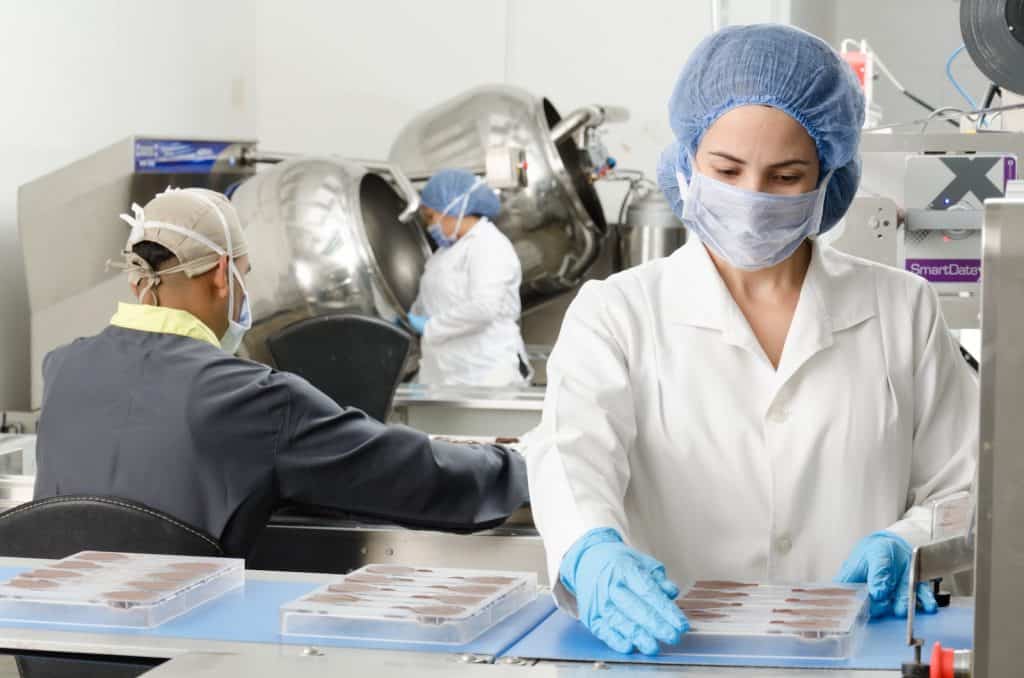The global food industry is one of the most diverse industries today. As of 2020, it is valued at over $5838 billion, and this number is slated to increase to $6195 billion by 2022. Factors such as the rise of globalization and the growth of the supply chain sector have given birth to a generation of consumers who require fast-paced and convenient solutions to their food needs. The food industry has had to step up and implement new-age technology to ensure food safety, sustainability, extended shelf life, and an overall satisfactory customer experience to satiate these consumers.
As of 2019, the global food technology industry alone is estimated to be worth over $220 billion, rising to a staggering $342 billion by 2027. So how can veterans of the food industry get a piece of this multi-billion-dollar pie? The answer is clear: implementing technologies that are capable of elevating a food sector into the 21st century, such as:
Data Loggers: One of the more critical issues affecting the food industry is the loss of food products due to unforeseen breakdowns of equipment. In larger facilities, equipment breakdown can result in the loss of thousands of dollars worth of product and consequently have a detrimental effect on a company’s finances and reputation. Unfortunately, these kinds of incidents can occur even during an operational shut-down, wherein operators might not be aware of such issues for extended periods; Temperature and Humidity data loggers are touted as a solution to these types of scenarios.
Data Loggers are devices that can fit into temperature-controlled or humidity-controlled equipment and measure specific parameters according to a pre-set frequency. An operator can then track these parameters through a mobile app/email, and any deviations from a specified “safe” range are recorded and are notified in real-time. This enables an operator to initiate repairs or maintenance activities with immediate effect, potentially saving thousands of dollars worth of product from spoilage. Another feature of this technology is that pre-set parameters, once measured, can be documented, validated, and analyzed to determine if equipment requires any preventative maintenance, thereby ensuring the long-term health of the equipment itself.
Irradiation Technology: Food safety is an evolving field of study, but is mostly manually monitored and handled. In this case, how do you provide safe food to vulnerable individuals, keeping in mind that manual food safety practices are prone to failure due to human error? The answer lies with Food Irradiation Technology.
Food irradiation is a process through which food products are exposed to ionizing radiation (gamma rays/electron beams) on a micro-dose scale. This radiation can subsequently eliminate harmful microorganisms, mold, and fungal spores from a product. Although the FDA had declared irradiated food safe back in 1963, the process is only now coming into the forefront, saving countless at-risk individuals from food-borne illness. Extensive studies on irradiated food products show they are effectively radiation-free and virtually identical to any product that has undergone other decontamination methods. This technology is fast being used in the retail product space, where it is being utilized as a method of preservation; this is due to its property of sterilization, which can, in turn, extend the shelf life of food products by a significant amount.
GTIN Tags: With the onset of globalization and increase in supply chain scope, issues such as adulteration have once again been pushed into the forefront; even hard-to-replicate food items such as eggs have been adulterated and released into the market. To combat this, anti-counterfeit technology known as GTIN Tags is fast becoming popular in the procurement sector.
GTIN stands for Global Trade Item Number; this string of 14 numbers is unique to each product and can be used to extract various kinds of data about the product itself. Mostly present on products in the form of a GTIN Tag, the uses for this kind of product information are vast, from sales and online purchase purposes to streamlining of receiving and storage procedures for large catering or retail facilities.
Cold Plasma Technology: Cold Plasma technology is a new method of sanitization that is slowly gaining momentum in the food industry; it uses reactive gasses to eliminate pathogens in a food product. Practically, this technology uses electricity in a carrier gas to create a medium capable of sanitizing food products. Additionally, some forms of Cold Plasma Technology have demonstrated a significant reduction in viruses.
An advantage of Cold Plasma Technology is that no external agents are required for initiation; the exposure time is also relatively low (5 – 15 minutes), which makes it a convenient option for large-scale manufacturing and retail facilities. This technology is also used in processes such as hydrogenation of oils, alleviation of allergens, seed germination performance, and even effluent management; although a nascent technology, Cold Plasma Technology has enormous potential in solving problems that are predicted to crop up in the future of the food industry.
The impact of technology on the food industry cannot be cast aside as a matter of financial restraint. To keep up with consumer demand for sustainability, safety, and convenience, techs such as data loggers, cold plasma tech, and anti-counterfeit technology have to be embraced and integrated into food industry systems to guarantee the industry’s longevity as a whole.





